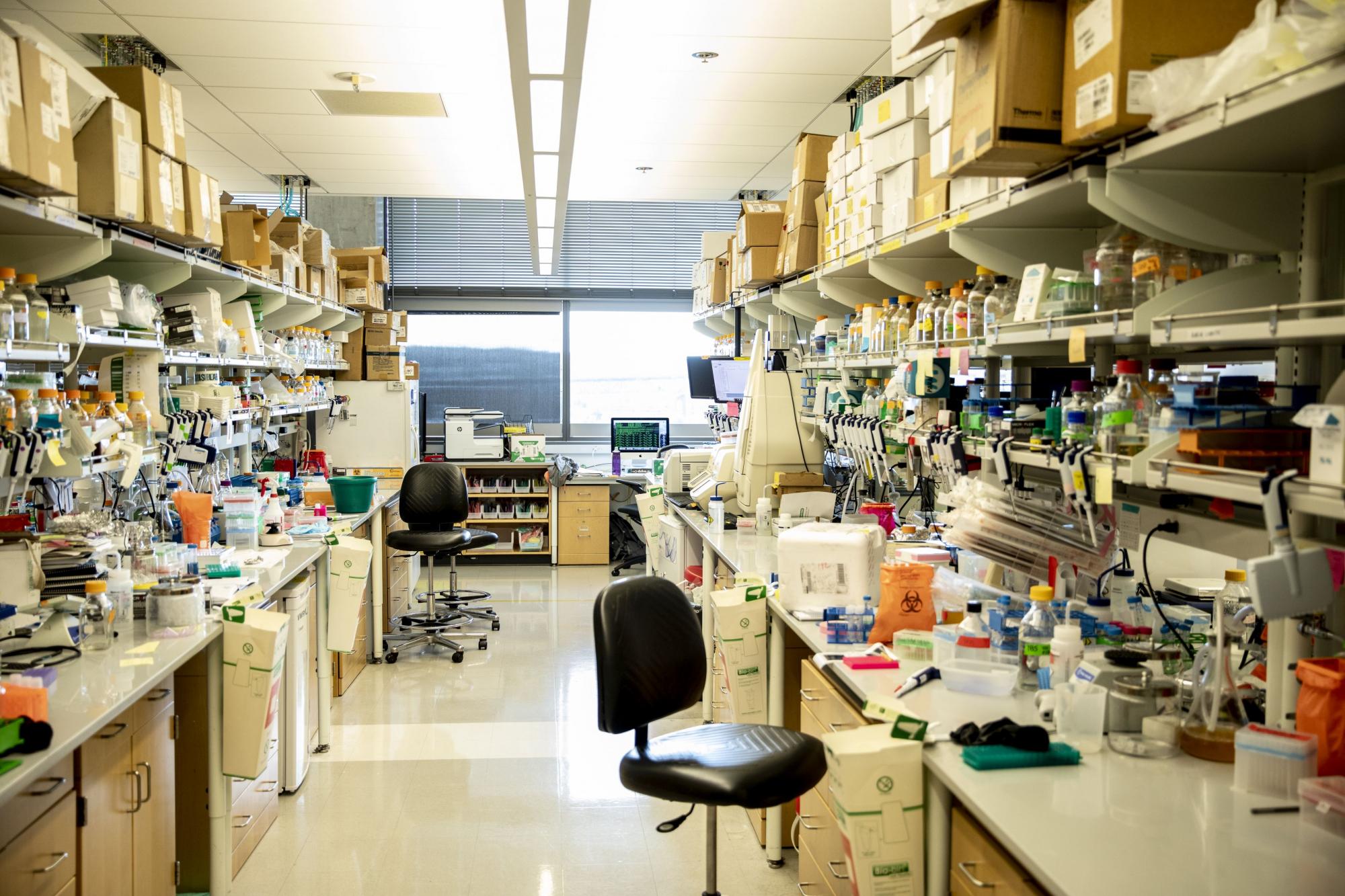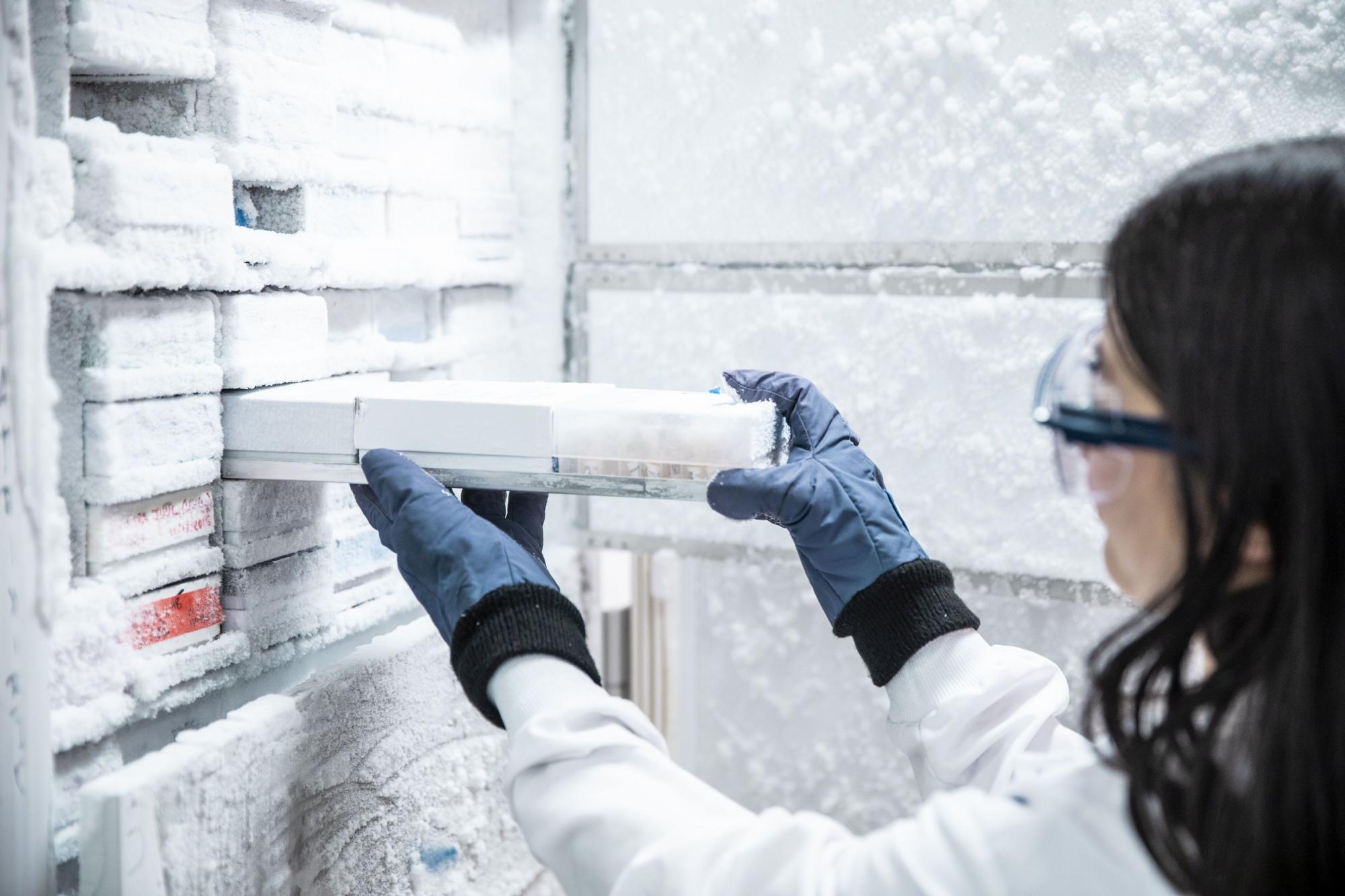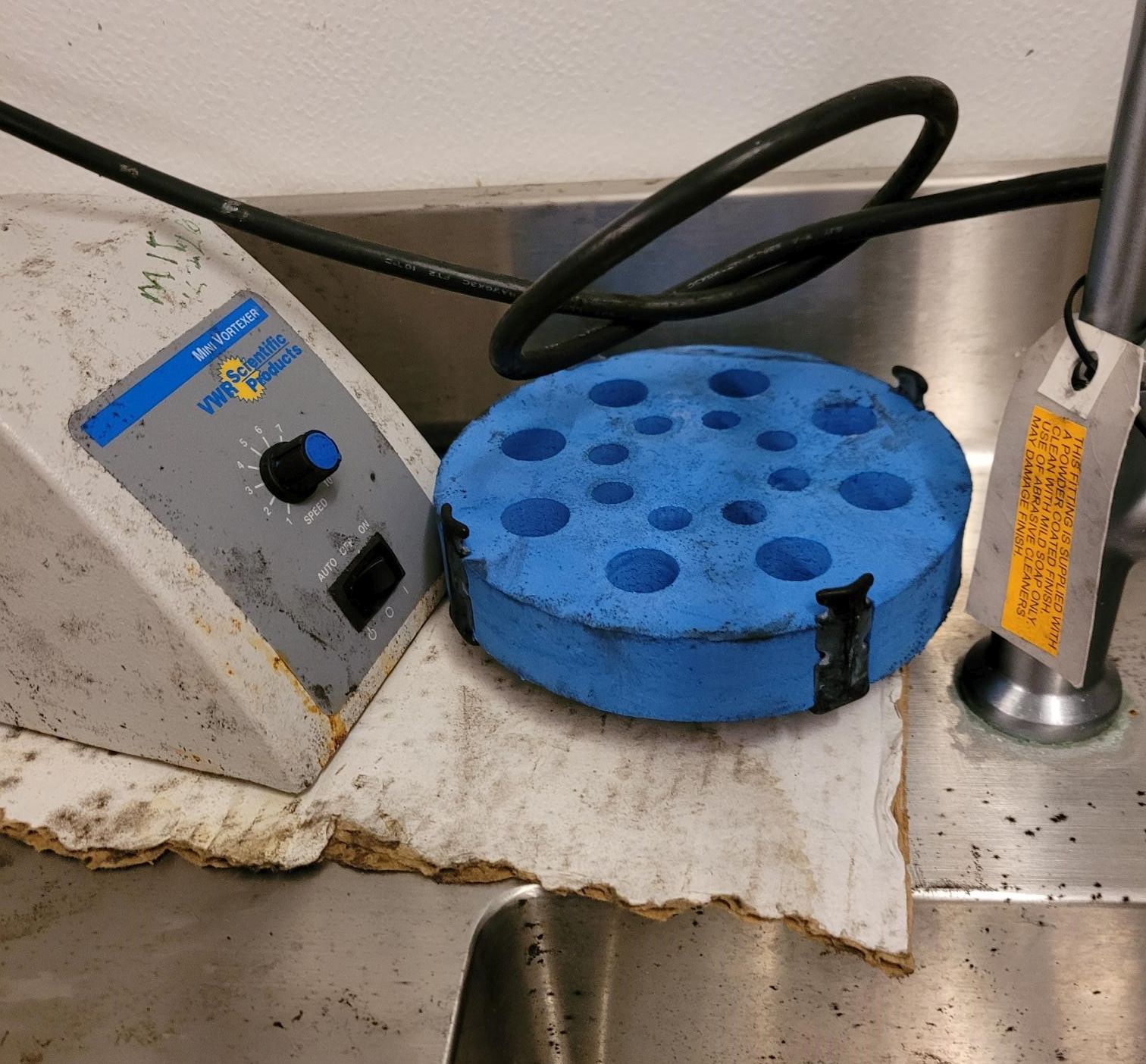October is National Biosafety Month, a time to strengthen and reevaluate biosafety practices in the lab.
Environmental Health & Safety (EH&S) encourages you to set aside some time for laboratory “self-care” or a spa day! A clean and tidy lab helps ensure a safe and healthy work environment and maintain the quality of research samples.
Failure to keep good housekeeping practices in the lab can lead to time consuming and costly issues including:
- Contamination: Dirty conditions in the lab can lead to the growth of unwanted mold and bacteria in reservoirs such as incubators, water baths, and biosafety cabinets. If experiments get contaminated, work may need to stop while the source of contamination is identified and treated. Allowing mold and bacteria to grow contributes to unhealthy air quality conditions and potential for exposure.
- Accidents: A cluttered lab environment can contribute to accidents or exposures by obscuring hazards such as sharps. Excess items on the floor may become trip hazards, block access to emergency washing equipment, or prevent a quick exit in an emergency.
- Visual fatigue: An overwhelming number of visual stimuli from clutter and old signage can make it harder to find important items in a timely manner, such as exposure response information, spill kits, centrifuge cups, or tools for a procedure.
Rather than allowing these problems to build to a critical mass, schedule a day to treat your lab to its very own spa day using our tips below:
Dispose of expired or unnecessary items
- Disposing of expired or unnecessary reagents and supplies increases available work surfaces and storage space.

- Remove excess cardboard, as porous materials cannot be wiped down if contaminated in a spill or splash.
- Store items in non-porous containers that can be wiped down or on shelves.
- If you need to dispose of old, unwanted equipment or supplies:
- Review the UW Surplus website for a list of items that UW Surplus cannot accept, such as chemicals, lab plasticware, and sharps.
- Follow the instructions on the Decontamination Form for items that UW Surplus can accept.
- Visit the Hazardous Material Disposal and Recycling page for information on disposing of items that UW Surplus cannot accept.
- Remember to clean up paper documents, too.
- Identify stockpiles of legacy documents or outdated procedures.
- Scan or store what needs to be kept per your records retention policy.
Clean out freezers and refrigerators
Free up space in your freezers and refrigerators by removing old and unwanted items that may otherwise sequester away in the freezer for years. Overly full freezers can lead to frost buildup that can decrease the efficiency and lifetime of the freezer. Defrost freezers annually or as needed.
- Find time that aligns with your lab’s ongoing experiments and identify a location to house samples in the interim.

Mitochondria Metabolism Center - Set up trays and absorbent pads to collect water and moisture.
- Avoid using sharp instruments to chip away at ice as this can damage equipment; instead, use a spray bottle of warm water or a blunt scraper.
- Evaluate materials as they are removed: Do they need to be retained, are they stored and labeled appropriately, are they included in your lab’s inventory?
- Dispose of unwanted biohazardous agents appropriately. Update freezer maps and inventory.
- Finally, use a diluted bleach solution to decontaminate freezer and refrigerator surfaces.
Decontaminate benchtops, equipment, and biosafety cabinets
After you’ve removed clutter, focus on decontaminating benchtops, equipment, and biosafety cabinets (BSCs) to help prevent contamination of your research items.

- Use a disinfectant that is effective against the biological agents that you work with and is compatible with the surface or equipment. The U.S. Environmental Protection Agency (EPA) maintains lists of registered antimicrobial products that are effective against specific organisms.
- Follow with water or alcohol to remove any disinfectant residue.
For benchtops, remove items and decontaminate the surface.
Equipment used with biohazards, such as centrifuges, incubators, and water baths, should also be cleaned.
To clean a BSC, first wipe down and remove any items permanently housed in the BSC. Using a cloth sprayed with disinfectant, clean all surfaces including underneath the BSC work surface. For hard-to-reach areas, use a mop or duster with an extended handle. Dispose of cleaning cloths as biohazardous waste. This video has great tips for cleaning your BSC.
Maintain a clean environment
A clean lab requires regular upkeep beyond an annual deep clean or spa day. Create a routine and break up lab chores into daily, weekly, monthly, and annual tasks.
- Daily tasks might include preparing fresh bleach dilutions and emptying benchtop waste bins.
- Weekly or monthly tasks might include cleaning equipment and wet mopping floors. Include time to update documentation and paperwork.
- Replace and launder lab coats on a routine basis and if contaminated.
Contact us
The EH&S Biosafety team is here to support your success in safety. We are available to provide guidance around decontamination and disposal of biohazardous items in your workspace, appropriate lab signage for biohazard labs, and more.
Please contact us if you have questions or would like to consult with an EH&S biosafety officer.